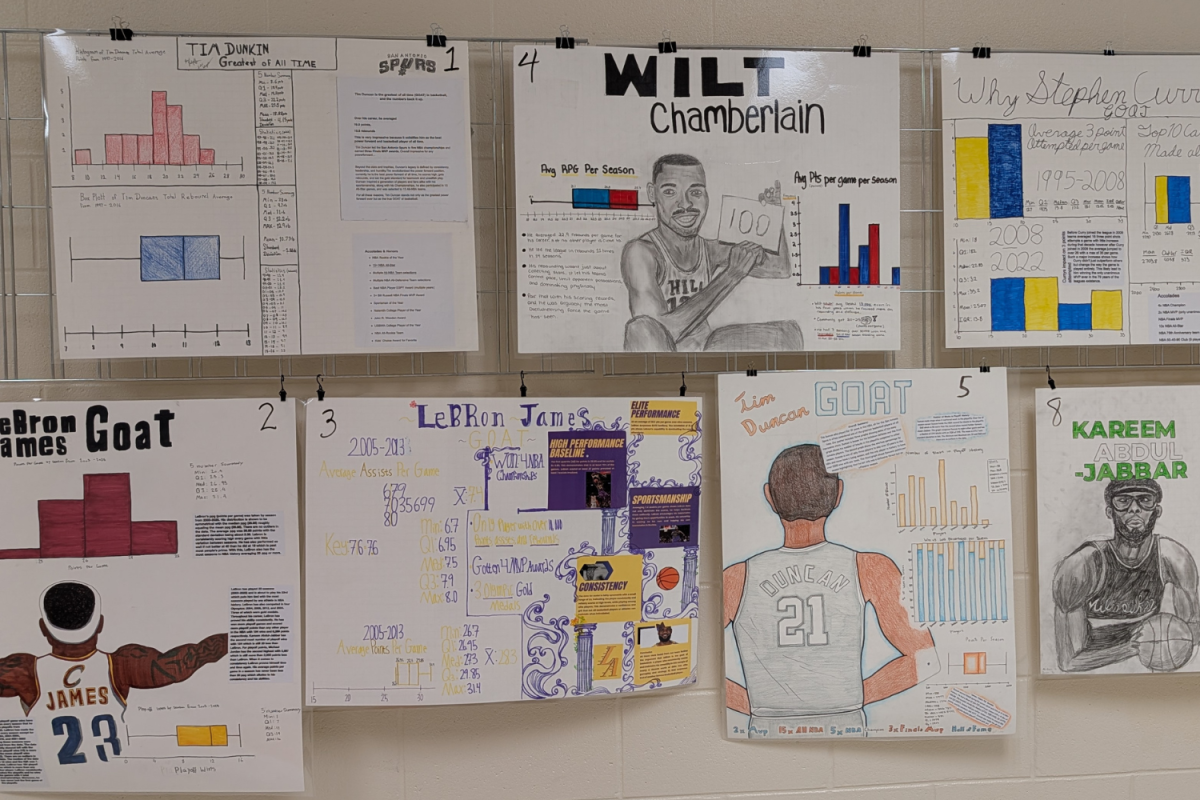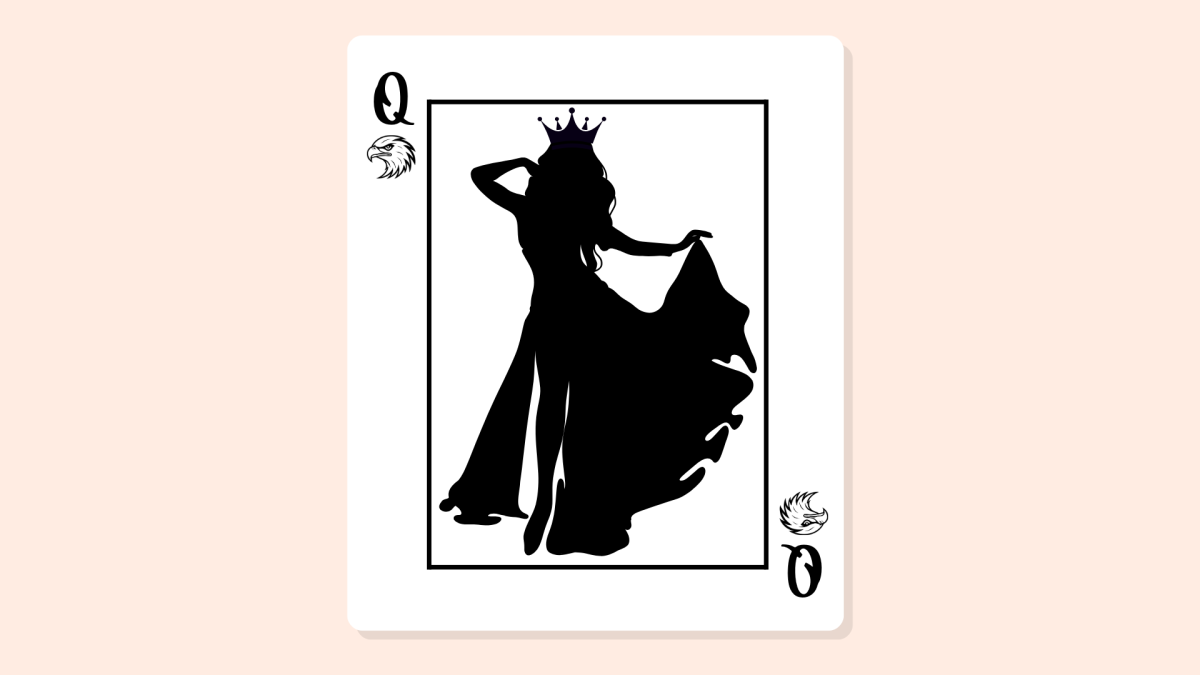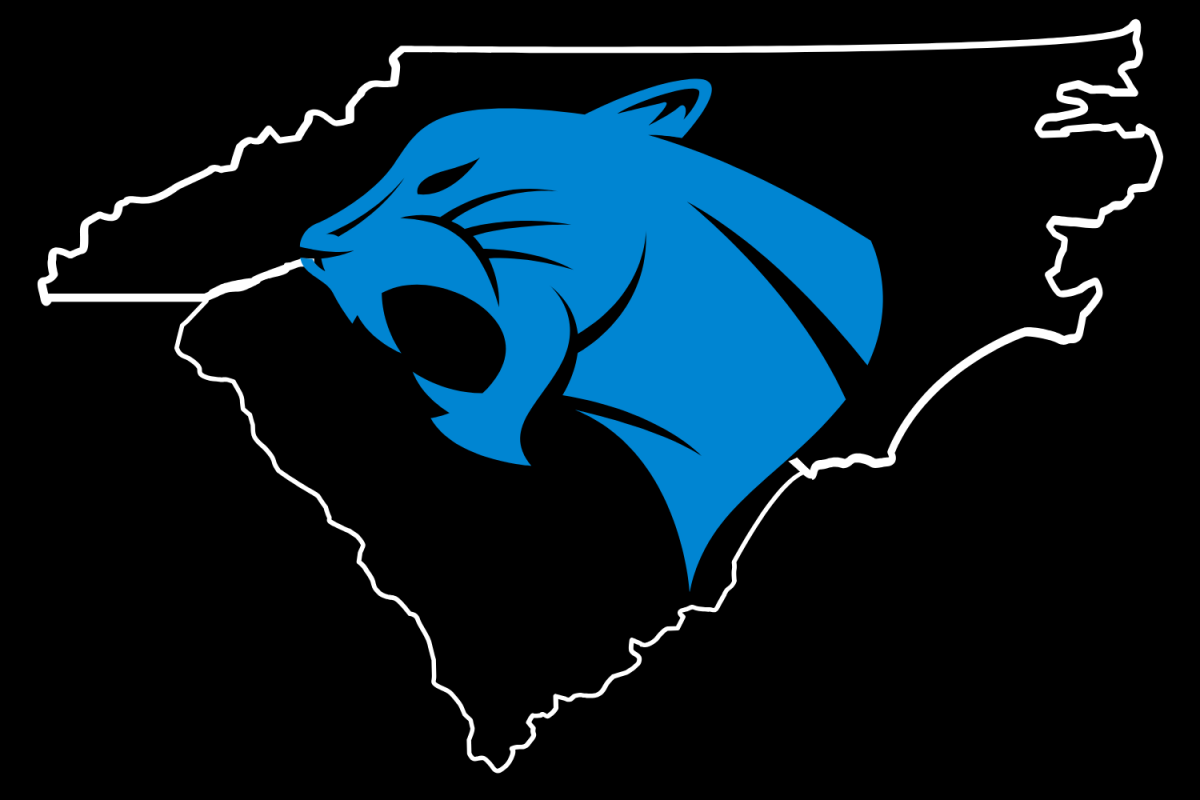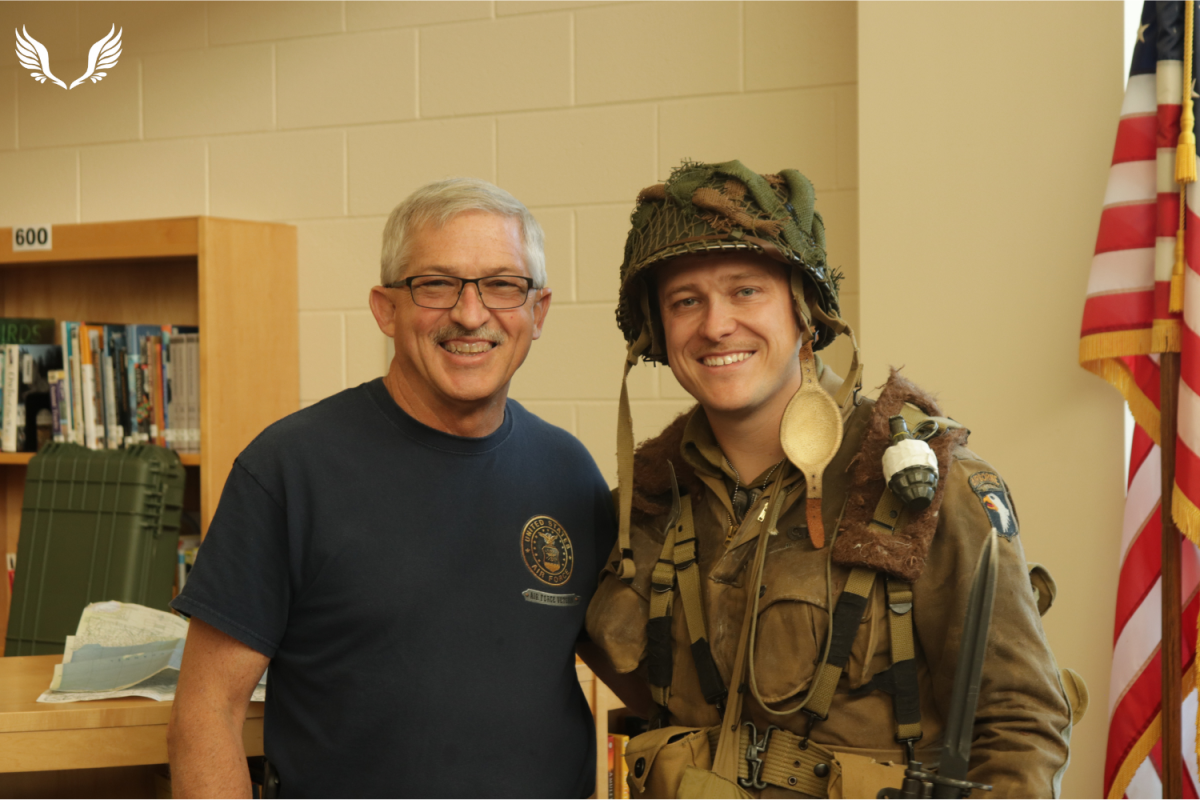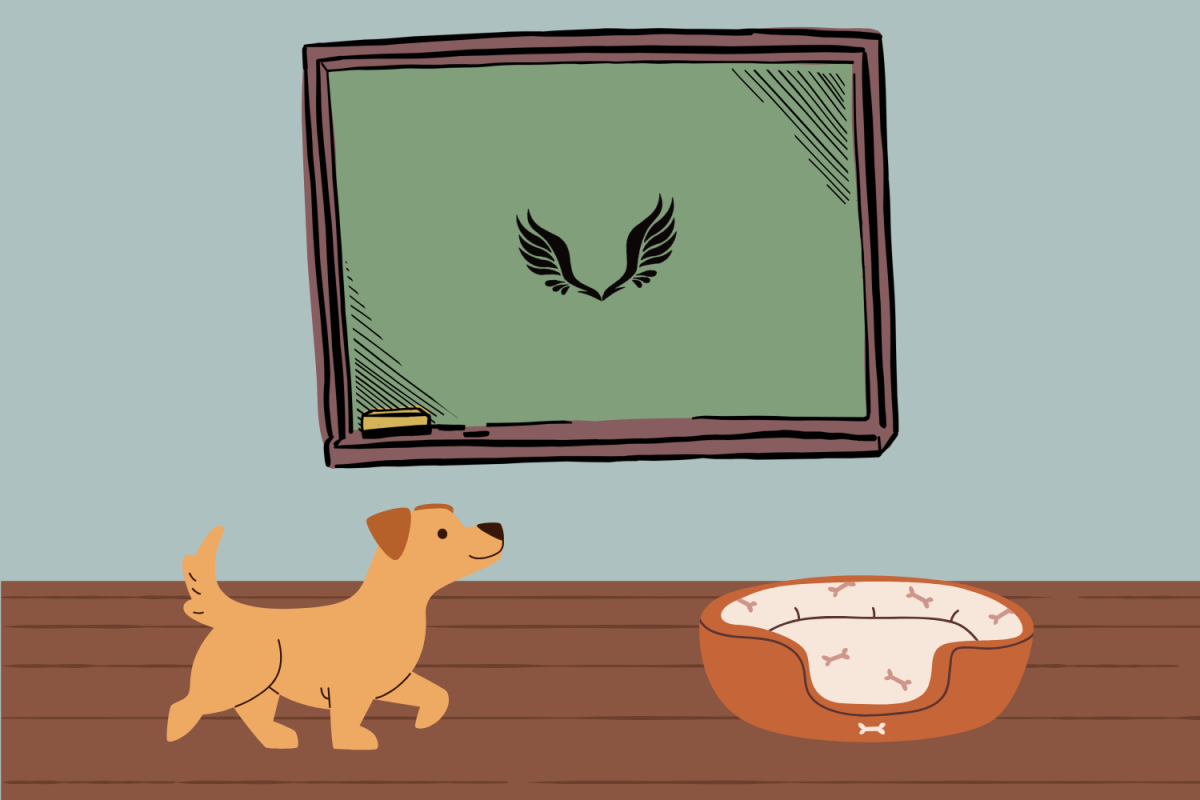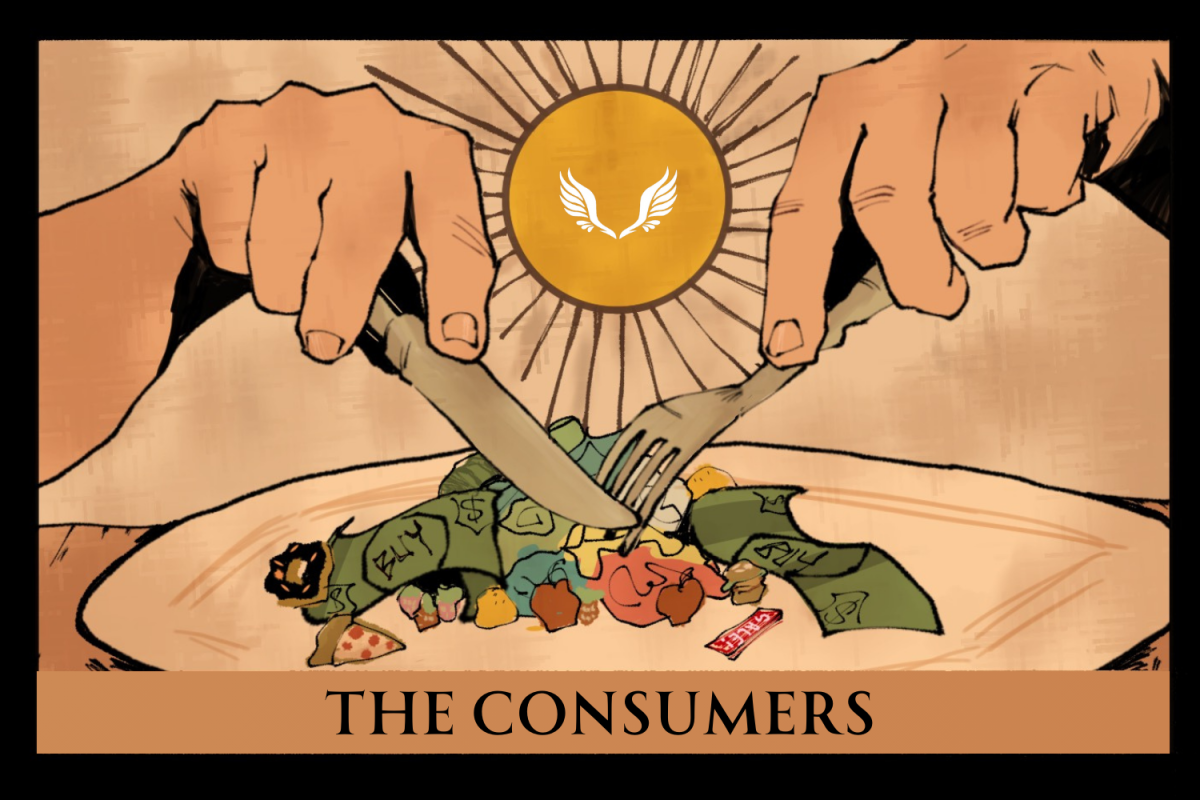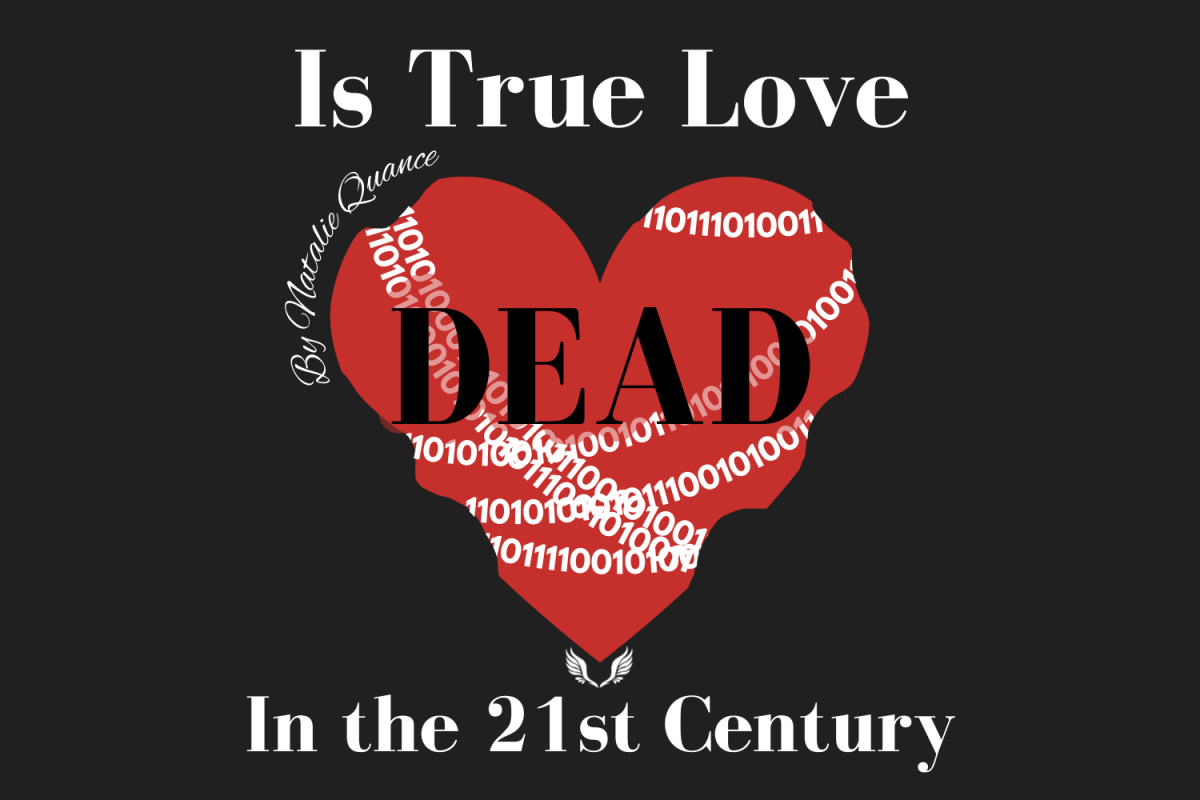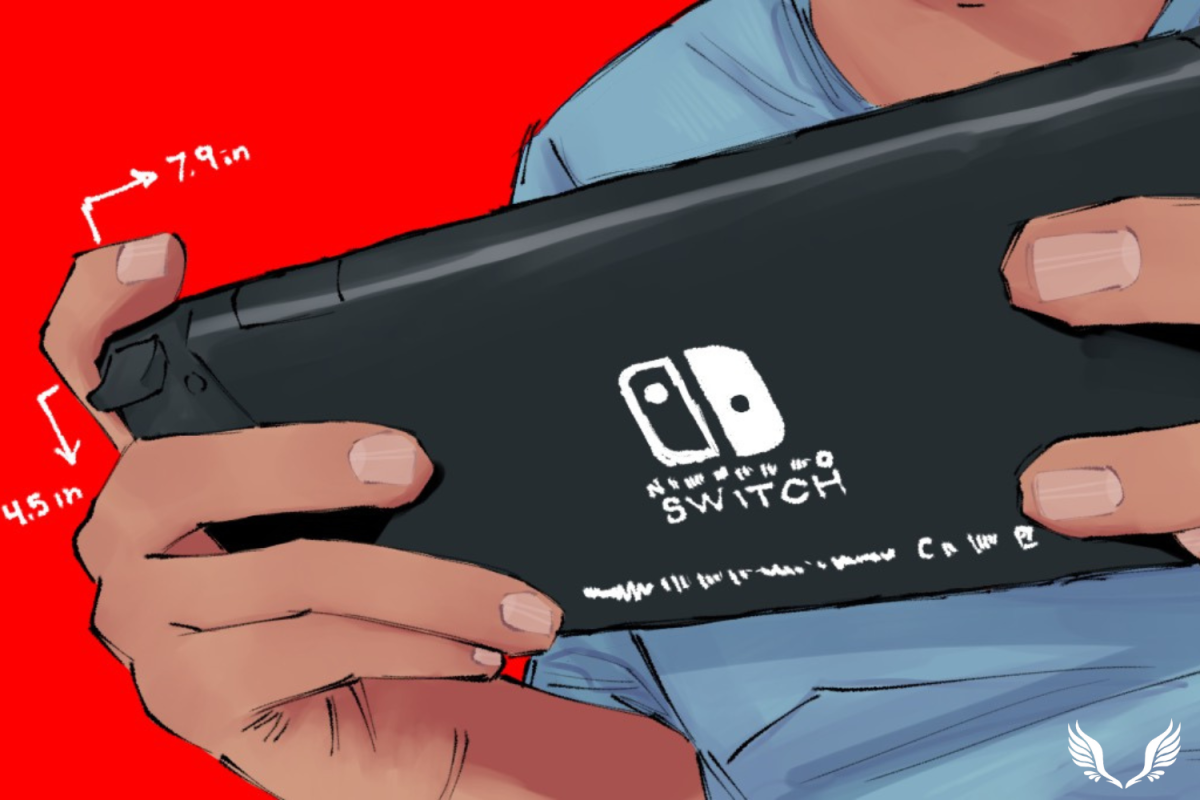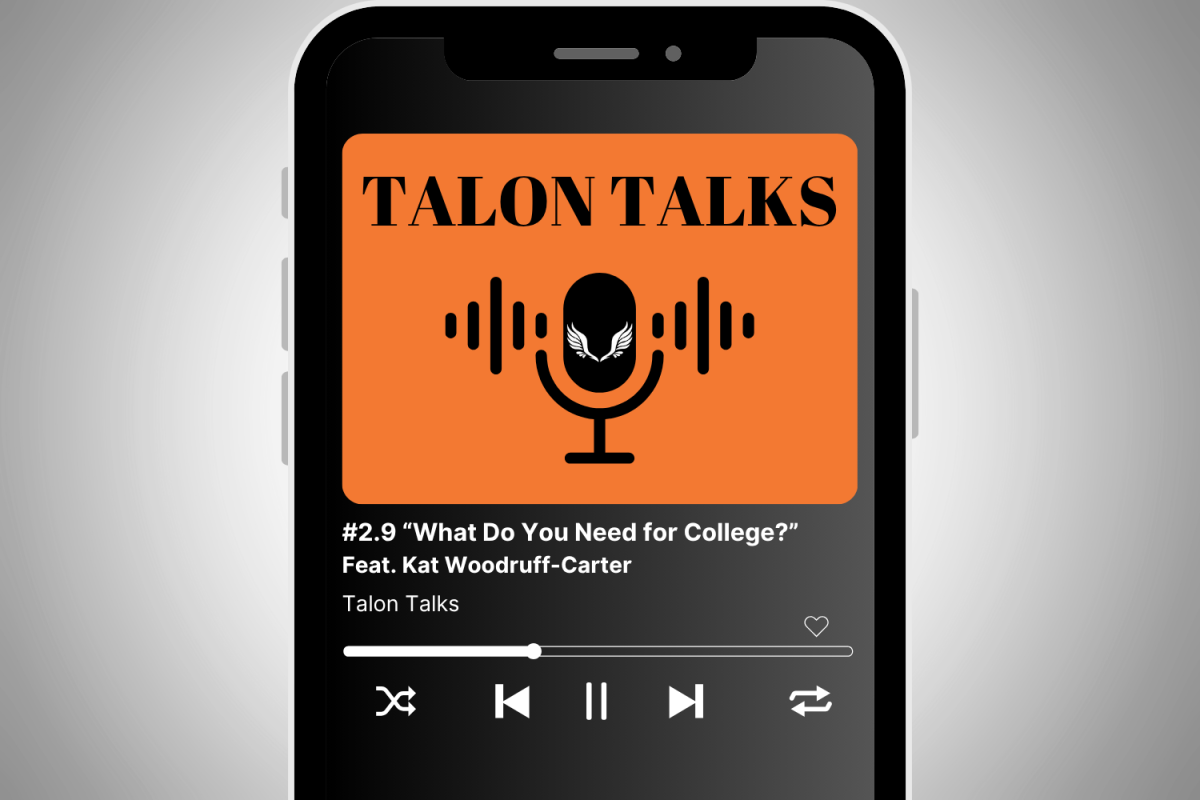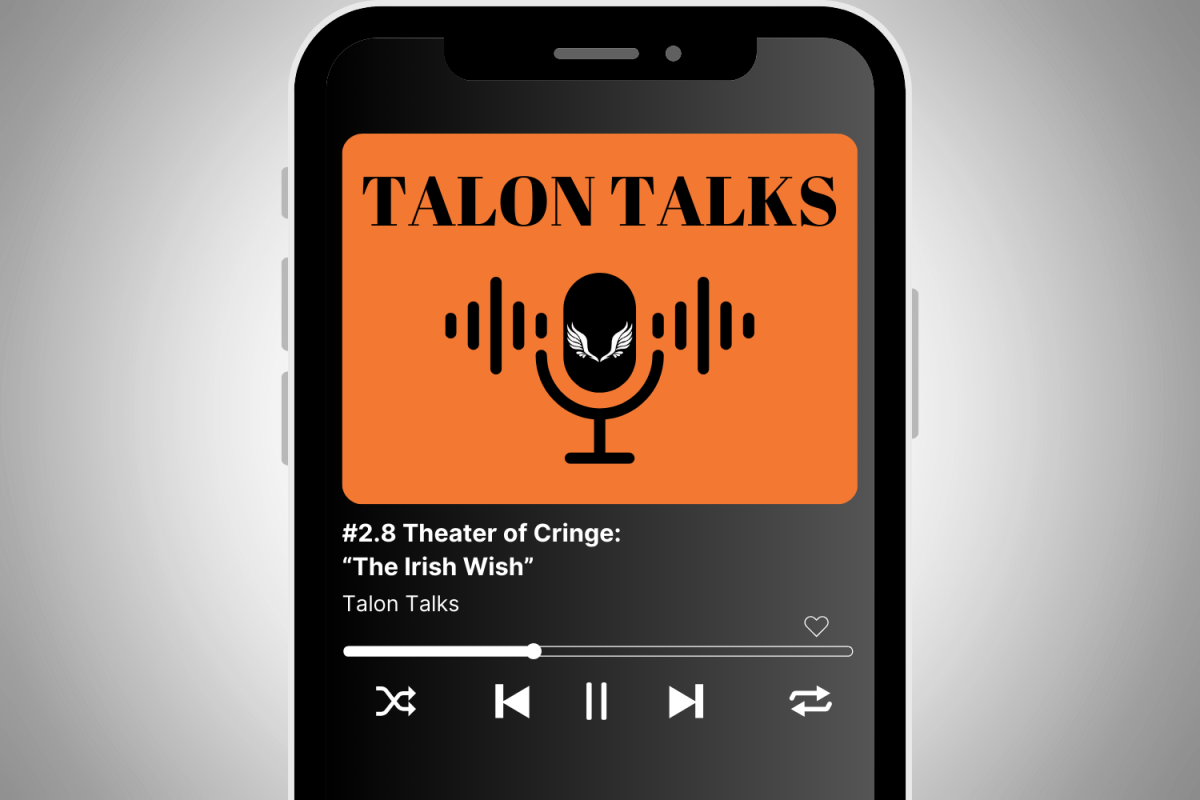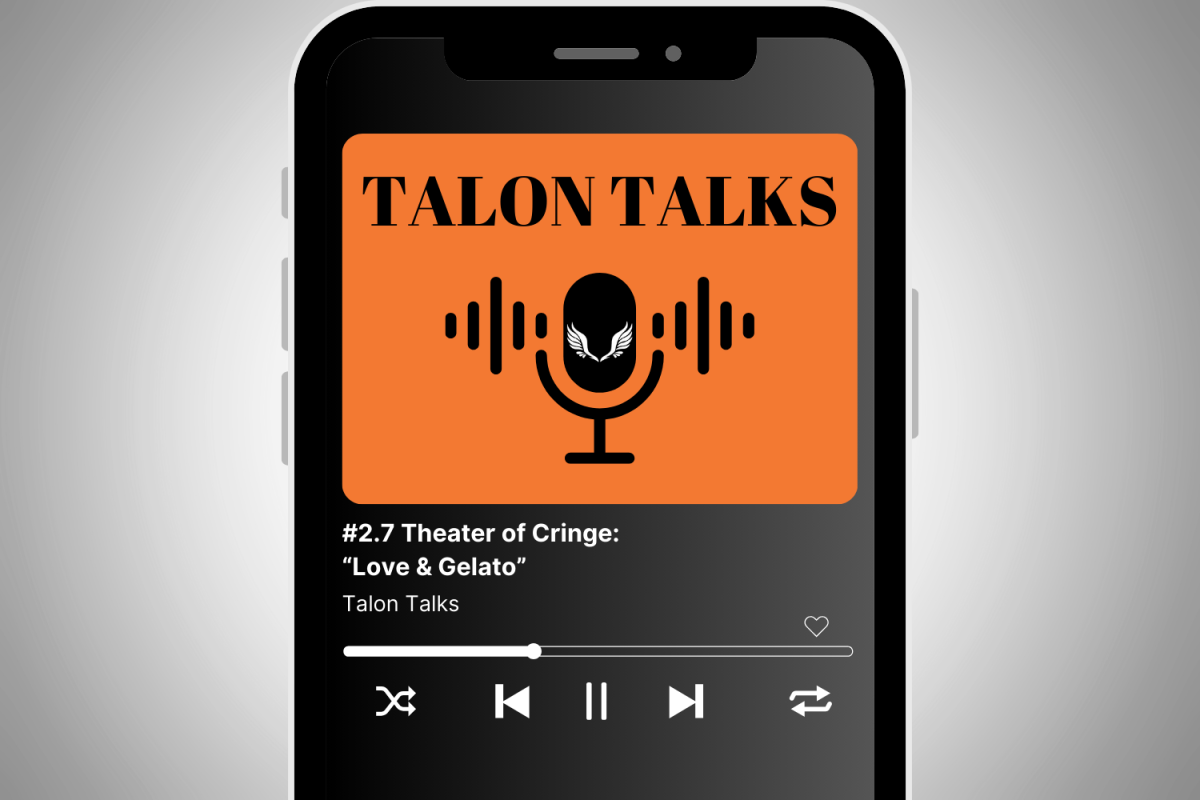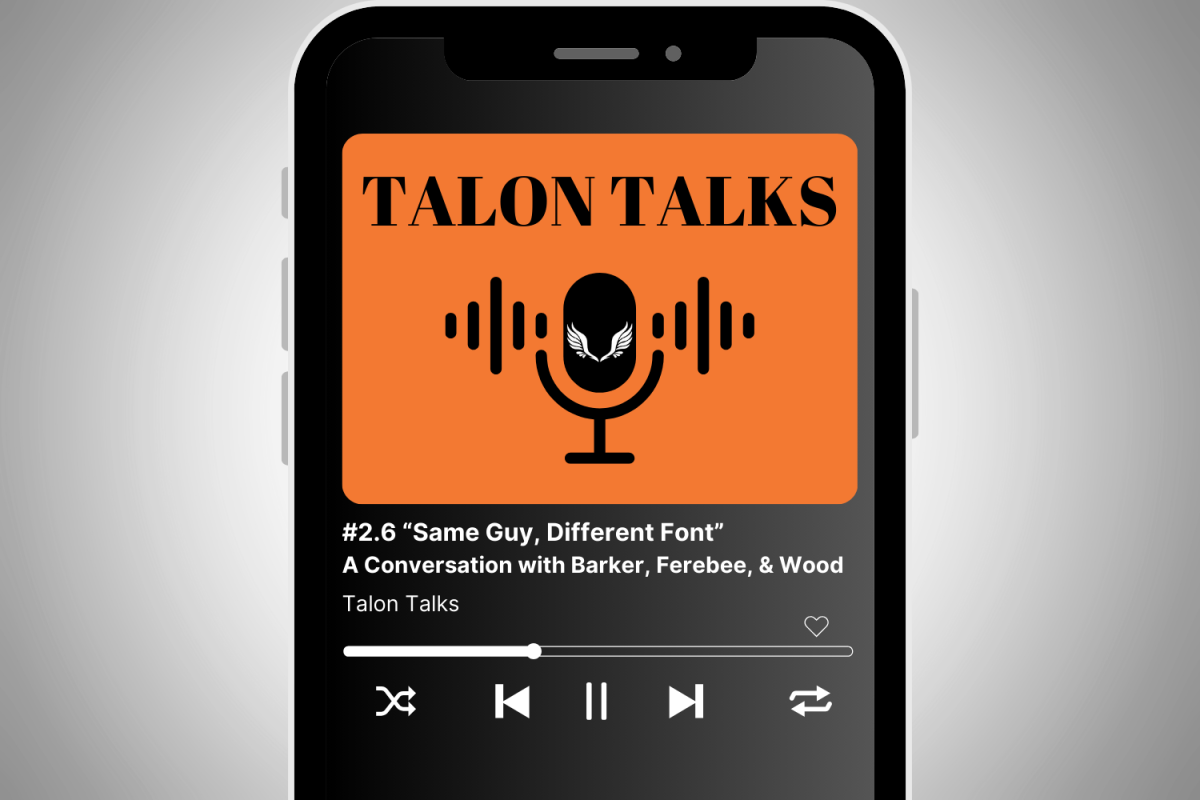Lebron James stands with arms outstretched and his back facing the audience, the number 23 clear under his Cleveland Cavaliers jersey as he stares up at a bar graph showing his average points per game from 2003-2025. Next to him are Tim Duncan and Kareem Abdul-Jabbar, their stats similarly displayed for all to see on a series of posters displayed on the walls of the math hallway.
Fun school assignments can be hard to come by, and as many students and teachers will tell you, it can be difficult to make a seemingly tedious math concept fresh and enjoyable. Yet, when James Lovato’s AP Statistics students began their culmination of the first unit of the year, the cheers from his classroom could be heard down the hallway as each student team was paired with an NBA legend.
For this unit, students were presented with an age-old question, one with an athletic twist: who is “the GOAT”? Every sport has its GOAT, its “greatest of all time.” The one who stands above the pack and seems to infiltrate every conversation. They are synonymous with their sport.
The assignment seemed easy enough: take the player that you’re assigned, and analyze how their plays and standing contribute to earning the title of “The GOAT.” Of course, there is one small problem: to be “the” GOAT means to be the only one, but despite the label, no one sport has ever had a single GOAT. So, when it comes time to bestow this label on a player, who qualifies? Is it possible to quantify greatness?
To add to the struggle, the students were presented with two further complications: they could only use two stats to justify their selection, and none of them could choose their subject. Each team was assigned an NBA “great” at random.
Many of the kids felt they were lucky, cheers erupting from them as they were assigned legendary players like LeBron James or Steph Curry. For others, the task presented an immediate challenge. While some players were undeniable household names, others were a mystery.
Senior Clara Phelps was assigned the player Earvin “Magic” Johnson, a legend to many but an unknown to her. Her research into his life and career made it clear why his name was among many of the project’s other contenders. In his thirteen seasons with the Los Angeles Lakers, five of which led to championships, Johnson redefined the position of point guard with his size and overall versatility. Despite this, for many, Johnson is best known for his AIDS diagnosis and his fight to destigmatize the disease. Johnson strived to live life to the fullest and not let his diagnosis hinder him in his achievements.
But are any of these details relevant to the GOAT discussion? Not for Phelps. Despite his undeniable influence on the game, Johnson’s statistics fall short when stacked against players like LeBron James and Steph Curry. And while his activism on AIDS is inspiring, is it what makes him great? Phelps’s tactic to prove Johnson as the GOAT was to focus on assists and triple-doubles, something Johnson led the league in.
“I think the hardest part was deciding which two stats to use in our project because there are so many, and it was hard to compare him to other players,” Phelps shared. “I think we were able to pick stats that highlight his abilities, though.”
For other students, the opposite problem occurred. When assigned a player like LeBron James, narrowing the argument down to only two statistics became the challenge. James began his career with the Cleveland Cavaliers, later joining the Miami Heat, returning to Cleveland, and then the Los Angeles Lakers. He has won multiple league MVPs and is the all-time leading scorer. Bryson Lantz and Luke Wollner were given LeBron James, so they had to fine-tune the statistics to just a few paragraphs. Unlike Phelps, the team chose to incorporate aspects of James’s work outside of basketball to prove he is the GOAT. As Lantz and Wollner note, he has been a huge advocate for racial justice and education, information that they believe can’t be ignored. Despite crafting their project around James, though, Lantz admits that another player is arguably more deserving of the title.
“The GOAT of basketball is honestly MJ [Michael Jordan], not because he was the best player, but because he brought so much influence to the game,” Lantz says. “He brought so much influence to the game. He was the fan favorite with the most jersey sales of all time and he played during the time in which NBA attendance was the highest.”
For other groups, excitement filled the atmosphere when they learned their assigned player. Being assigned Stephen Curry was a dream come true for Jackson Barrett and Koleton King. Curry is a household name when it comes to the GOAT debate. He revolutionized the shooting game as a point guard, has led the Golden State Warriors to multiple championships, and has won numerous MVP awards.
“I was pretty excited because I knew who Stephen Curry was as a player,” Barrett said. “I knew that he had some amazing skills and that he had some incredible stats from his career. He was someone who had a lot of data that I could work with.”
Greatness on Display
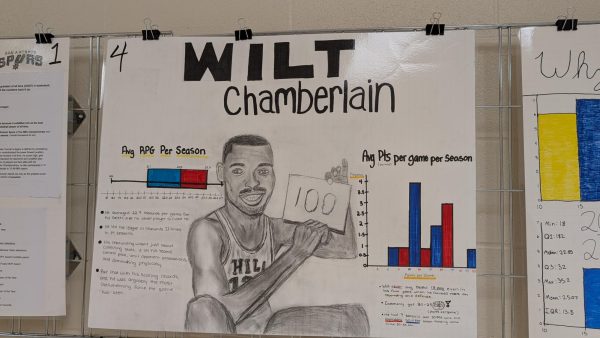
The student teams would eventually compile their results onto posters that were placed throughout the math hallway as the project concluded. Each poster includes graphs of the players’ best statistics and other important information to prove why this player is the GOAT. Students also spent a decent amount of time focused on drawings or other artistic elements to draw eyes to their posters. This artistic element was not a part of the original iteration of this project, however.
Lisa Kenney, math teacher and creator of this project, first asked the “GOAT” question as a fun, one-day assignment that allowed her students to practically apply statistics. But as the years have gone by, the project has gotten bigger, and this artistic angle has taken on a life of its own, with Kenney reflecting that while she doesn’t want to do arts and crafts projects, the student work this year has been so good that both she and Lovato have been more than happy to give their students room to flex their creative muscles.
The list of players provided has been fine-tuned since 2021 to ensure that each player could easily be proven as the GOAT, but were generational talents that changed the game outside of the court. Kenney incorporated the opinions of many teachers to ensure its success.
“Several people have helped me to refine the list that students research,” Kenney says. “Tim Kenney, Coach Wilson, Coach McRae, and Coach Pittman all debated the master list to determine who was deserving of comparison for the project. I wanted to ensure that each era’s generational talents were represented.”
So, who is the GOAT? The answer remains uncertain. What is clear, though, is that greatness is more than a numbers game. Even still, for these students and teachers, it’s very much a game worth playing.

